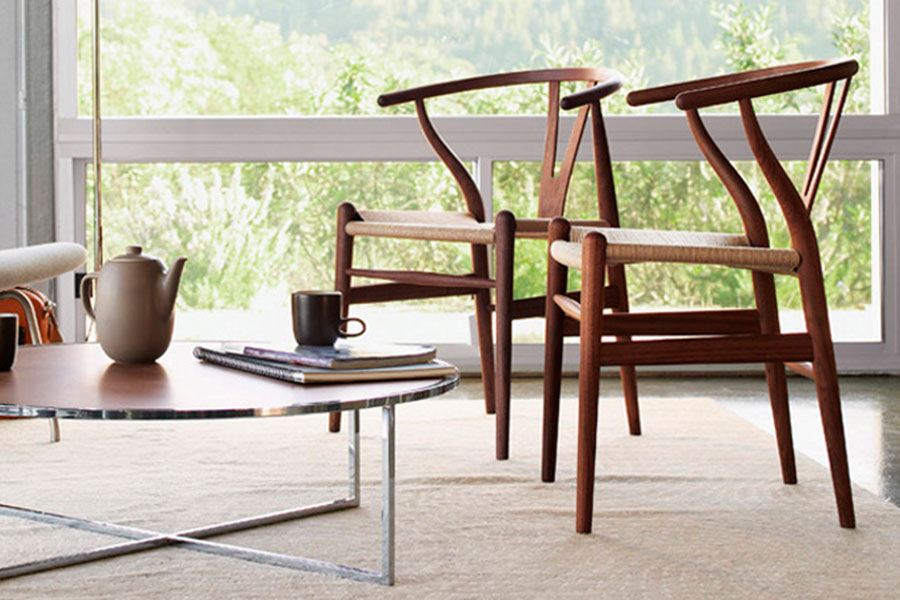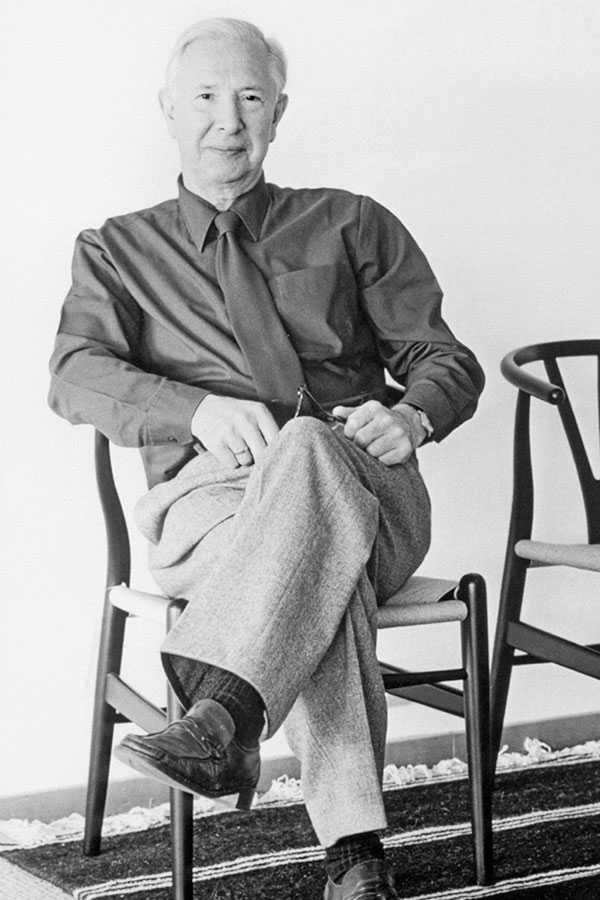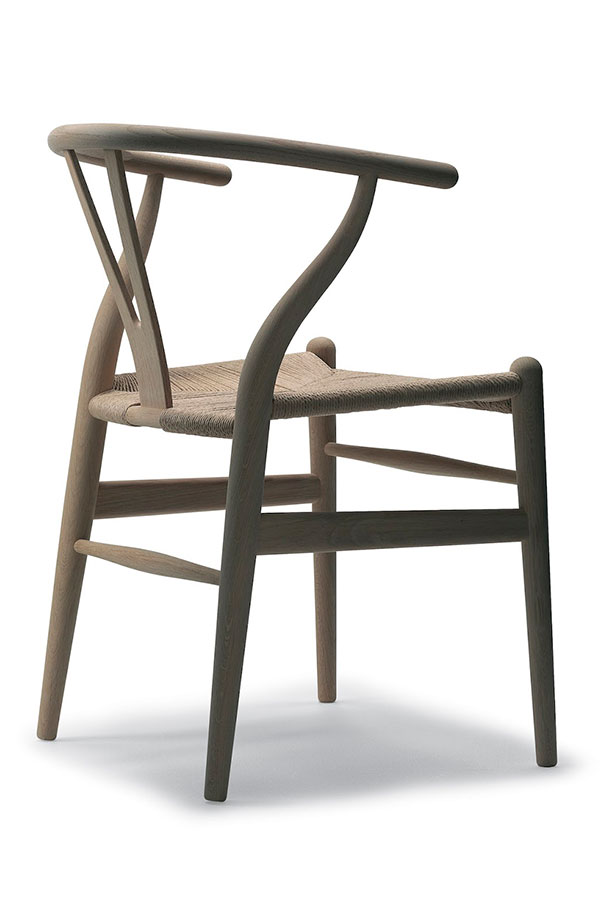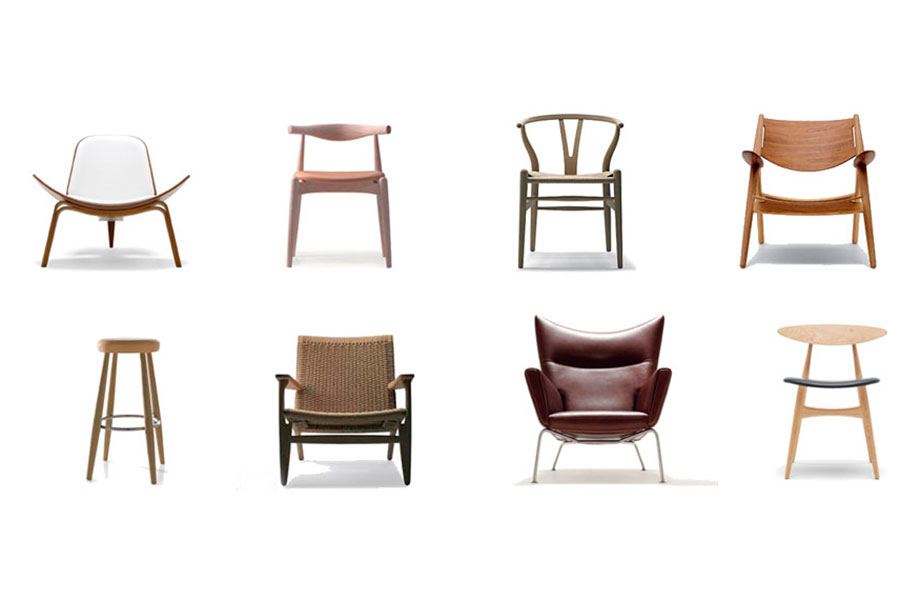Wishbone chair, an icon of Scandinavian design

¿Qué vas a encontrar en este artículo?
ToggleThe CH24 chair, better known as Wishbone, is an icon of Scandinavian design. And it is not by chance, the elegance of its lines mixed with its enormous functionality have made it one of the best-selling chairs of the twentieth century.
Wishbone chair and its designer Hans J. Wegner
Image from nuria-naharro.blogspot.com
The Wishbone chair was designed in the 1950s by Hans J. Wegner and soon became the star model of the Carl Hansen brand, which today remains one of the most important design furniture firms.
Wegner was born in Denmark in 1914 and spent his life searching for perfection in each of his designs, becoming an indispensable element to understand the history of design in the second half of the 20th century.
Image from www.scandinaviandesign.com
Hans began working as an apprentice in a cabinetmaker’s shop and then went on to study at the Copenhagen School of Arts and Crafts. He later entered the Academy of Architecture and for a time was linked to the studio of Arne Jacobsen and Erik Møller, but finally decided to devote himself to furniture design, chairs being his true passion.
Wegner’s designs broke with the classicism established by Kaare Klint’s school in pursuit of greater freedom when working with the raw material, making it the main protagonist of his furniture.
As Wegner himself said “The chair is the closest thing to people, so it is important that its details are perfect. I feel the details as much as I see them. People touch the furniture, they see with their hands”.
Image from nuria-naharro.blogspot.com
Wegner sought with his chairs the democratization of design furniture, combining aesthetics and functionality to perfection. The CH24 chair has an almost perfect ergonomics, which allows you to keep your back straight and also support your arms.
In addition to the CH24, Wegner designed other equally successful chair models such as the peacock chair, the Swivel model, the Shell model or the CH29, known in the USA as “The Chair”, which was used in the Nixon vs. Kennedy television debate.
Wegner is considered one of the most relevant designers of the 20th century and his works are exhibited in different museums such as Die Neue Sammlung in Munich or the MoMA in New York, where his designs are part of the permanent collection.
Wishbone chair manufacture
Today, the Wishbone chair is still manufactured by Carl Hansen and, although many processes have been automated, its production is still largely handmade.
Combining technology with craftsmanship results in a piece of furniture with a structure of millimetric precision which, together with exhaustive controls, results in a product of the highest quality.
Image from www.sillasmuebles.com
The Wishbone chair is made of beech wood from renewable sources. The seat is made of paper cord to ensure both comfort and durability.
Carl Hansen: 100 years of furniture design history
Image from www.greekbcn.com
Carl Hansen founded his own company in 1908 in Odense, Denmark with a single goal: to combine craftsmanship with mass production to offer high quality furniture at affordable prices. A philosophy that continues to this day.
The company’s collaboration with Hans Wegner with the firm began in 1949 and was key to the development of the firm and its consolidation in the design furniture sector.
The Wishbone chair in today’s design
The Wishbone chair continues to be an icon of Nordic style and a regular fixture in interior design.
Although the design has hardly changed in recent years, today we can find the CH24 chair in multiple colors and finishes.
We can find it in kitchens, dining rooms, living rooms or bedrooms as this model brings elegance and warmth to any room.
At MisterWils we have our own Wishbone chair: the Wegner model.
The Wegner chair has a structure made of wood and seat in braided natural fiber to give extra comfort. It is also available in several finishes.
What are you waiting for to have it at home?
The Wishbone chair in our catalog
WEGNER WOODEN CHAIR
In stock
✔ En stock total: 320 unidades
168,19€ – 192,39€Price range: 168,19€ through 192,39€
Download the MisterWils catalog of furniture and lighting.
Every month we update our catalog with all the news in chairs, tables, lamps, sideboards, stools, shelves, and much more. We have furniture for the hospitality industry, specialists in Contract furniture, you can find out about the advantages for professionals.

Download the MisterWils catalog of furniture and lighting.
Every month we update our catalog with all the news in chairs, tables, lamps, sideboards, stools, shelves, and much more. We have furniture for the hospitality industry, specialists in Contract furniture, you can find out about the advantages for professionals.

Download the MisterWils catalog of furniture and lighting.
Every month we update our catalog with all the news in chairs, tables, lamps, sideboards, stools, shelves, and much more. We have furniture for the hospitality industry, specialists in Contract furniture, you can find out about the advantages for professionals.








